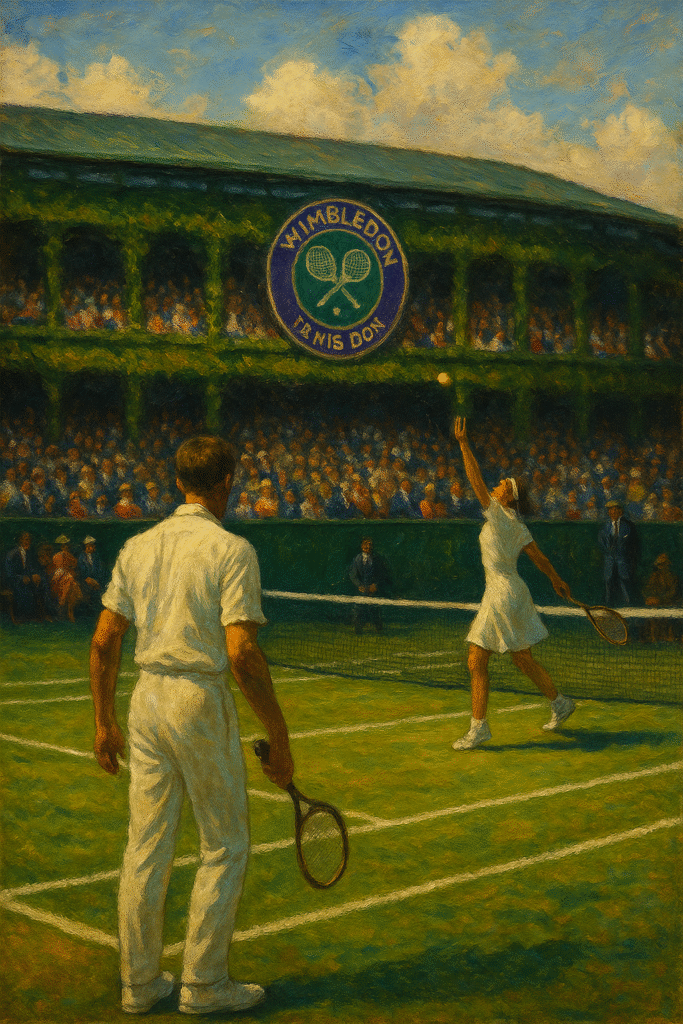Wimbledon is more than a tennis competition; it’s a cultural icon representing British heritage and societal evolution. Established in 1877, and as the oldest tennis tournament, it reflects class, culture, and social dynamics, making it a unique symbol of tennis’s global influence. How does this legendary event encapsulate more than mere sport? Below, we delve into its rich history, enduring impact, and contemporary relevance.
A Historical Lens on Wimbledon
Brief Overview of UK Tennis History
Wimbledon, launched in 1877, is the world’s oldest tennis tournament. More than its historic timeline, it mirrors the UK’s social evolution. Originating as an elite pastime, the tournament encapsulates the blend of class, culture, and sports, showcasing broader societal shifts. According to the Wimbledon Lawn Tennis Museum, its history profoundly impacts British culture.
Class and Culture in Sports: The Early Days
In its formative years, Wimbledon transcended tennis, serving as a high-society enclave where Victorian elitism thrived. This period saw gentlemen in suits and women in exquisite dresses at the courts, epitomizing exclusivity. The Wimbledon atmosphere became synonymous with culture and status, fostering an identity rooted in tradition.
From Tradition to Modernity: Evolution of Wimbledon Culture
The Shift Toward Inclusivity
Wimbledon’s attendee demographics have transformed from exclusive elite gatherings to more inclusive, diversified crowds. It symbolizes a broader acceptance and reflects a changing UK social landscape. Notably, this transformation represents a pivotal cultural shift in tennis and social identity.
Evolving Sports Culture: The Role of Technology
Technology and social media have revolutionized fan engagement with Wimbledon. Fans worldwide engage in real-time discussions and content sharing, democratizing an experience once reserved for the affluent. This technological shift redefines the connection between sports, culture, and global accessibility.
Wimbledon as a Cultural Platform
Fostering Global Dialogue
Wimbledon has become a stage for critical conversations on gender equality and representation in sports. It reflects cultural narratives and class dynamics, making it a platform for global discourse on these pressing issues. Articles from The Guardian delve into its cultural implications and ongoing societal dialogues.
Artistic Influence and Iconic Traditions
The aesthetic influence of Wimbledon extends into art and fashion, inspiring numerous creative works. The all-white dress code, Centre Court’s roof, and strawberries and cream are traditions that highlight the blend of heritage and modern influence. Fashion designers like Ralph Lauren have drawn inspiration directly from Wimbledon’s aesthetics, underscoring its global cultural impact.
Current Trends and Future Trajectory
Navigating Modernity While Honoring Tradition
While modernity pushes Wimbledon towards inclusivity, its traditions preserve its essence. The balance between honoring heritage and embracing change is central to its identity. Discussions on BBC Sport emphasize how Wimbledon maintains this balance, attracting diverse audiences while retaining its unique traditions.
Predicting Wimbledon’s Future Impact
Wimbledon stands at a cultural junction, poised between historic reverence and contemporary demands for diversity and representation. As society evolves, so too will Wimbledon’s role as a cultural mirror and influencer. It continues to shape and be shaped by global cultural narratives, an aspect well-documented in academic reviews from Oxford University Press.
Concluding Thoughts: Wimbledon’s Continuing Legacy
As Wimbledon navigates its intricate relationship with tradition and innovation, it remains a potent symbol of class, culture, and sports. More than a tennis tournament, it’s a beacon of societal values, championing cultural narratives that transcend the game itself.
—
Additional Resources for Exploration
1. “Wimbledon and British Culture” – Available on Google Scholar
2. “Social Impact of Wimbledon” – Research via Sports Journal
3. “Fashion Trends from Wimbledon” – Explore insights on Vogue
4. “Wimbledon: Tradition and Modern Influence” – Read more at ESPN


